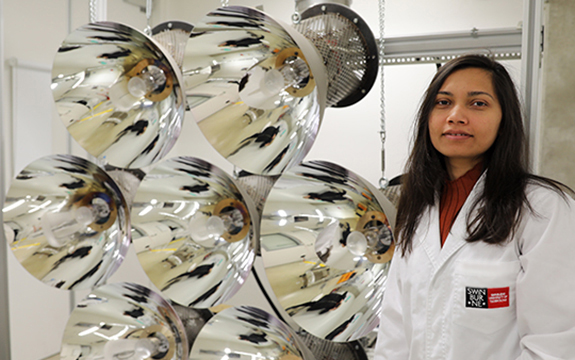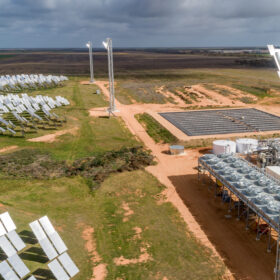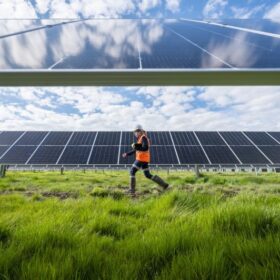Swinburne University of Technology (Swinburne) PhD candidate Suneeti Purohit has been recognised for her remarkable research incursions into revolutionising the steel industry with solar power. Purohit innovations have won her the 2019 AMP Amplify Ignite competition.
Recent analysis by Wood Mackenzie projects the Asia Pacific’s decarbonisation bill could hit US$3.5 trillion by 2040. US$3.5 trillion is enough to buy everyone in Sydney a house at Sydney’s inflated housing prices, or alternatively, it’s enough to buy everyone a single avocado toast at a trendy cafe.
Thankfully, Swinburne PhD candidate Suneeti Purohit is looking out for her fellow avocado smash loving Australians. Purohit is seeking to utilise solar power to convert iron ore to molten iron.
Like Dale in the Australian cult classic film The Castle, Australians love to dig holes, and there is nothing Australians love to dig for more than iron ore. Australia is the world’s biggest producer and exporter of iron ore, the essential ingredient of steel. Unfortunately, the process is a major carbon emitter. According to Swinburne, in 2017-2018 global steel production was about 1800 million tonnes, approximately 30% of total industrial carbon dioxide emissions.
“With my research,” said Purohit, “I am trying to lower carbon emissions by up to 50% by following two novel approaches using concentrated heat from the sun to convert iron ore to molten iron.”
The first of these novel approaches sees concentrated solar heat used as a substitute of nearly 50% of fossil fuels used in iron making. “This concept has been tested in the laboratory-scale solar simulator-reactor setup at Swinburne and iron was successfully produced from iron ore,” Purohit says.
The second approach involves the curbing of iron’s carbon emissions through the development of an alternative agglomeration route of magnetite ore. The current processing of magnetite ore requires the addition of oxygen to oxidise the magnetite and make it reducible. However, this process subsequently requires the removal of the oxygen by burning extra carbon, “about 150 kg extra carbon emission for every tonne of iron production,” notes Purohit.
“We developed an alternative agglomeration process that involves forming lime-magnetite pellets that can directly be charged to iron making units without the need for oxidation,” says Purohit, whose novel approaches are seeking patents in Australia and the USA.
Purohit believes the tendency of most of Australia’s iron ore mines to be in sunburnt regions of Western and South Australia means mining companies could easily utilise these solar advancements to reduce their emissions. This transition would not only save mining companies money on fossil fuels but on transportation costs too.
“Currently, there is a strong push towards cleaner manufacturing technologies worldwide,” Purohit says, “My innovations have the potential to address these issues in an economical way.”
The mining industry and iron ore mining in particular are already moving in the right direction in the energy transition to renewables. In October, Fortescue Metals and Alinta Energy made a deal to use solar power for up to 100% of its daytime energy needs at the Chichester Hub iron ore operation in the Pilbara.
The growing trend of solar PV utilisation in powering mining has been picking up speed in recent years with notable installations at the Sandfire copper and gold mine, the Granny Smith gold mine, the Cannington silver and lead mine and the Nova mine.
The AMP Ignite competition seeks to foster innovation and entrepreneurialism at the PhD level in order to bridge the gap between academia and business. Purohit’s winning pitch garnered her $10,000 toward the progress of her research.
This content is protected by copyright and may not be reused. If you want to cooperate with us and would like to reuse some of our content, please contact: editors@pv-magazine.com.








By submitting this form you agree to pv magazine using your data for the purposes of publishing your comment.
Your personal data will only be disclosed or otherwise transmitted to third parties for the purposes of spam filtering or if this is necessary for technical maintenance of the website. Any other transfer to third parties will not take place unless this is justified on the basis of applicable data protection regulations or if pv magazine is legally obliged to do so.
You may revoke this consent at any time with effect for the future, in which case your personal data will be deleted immediately. Otherwise, your data will be deleted if pv magazine has processed your request or the purpose of data storage is fulfilled.
Further information on data privacy can be found in our Data Protection Policy.